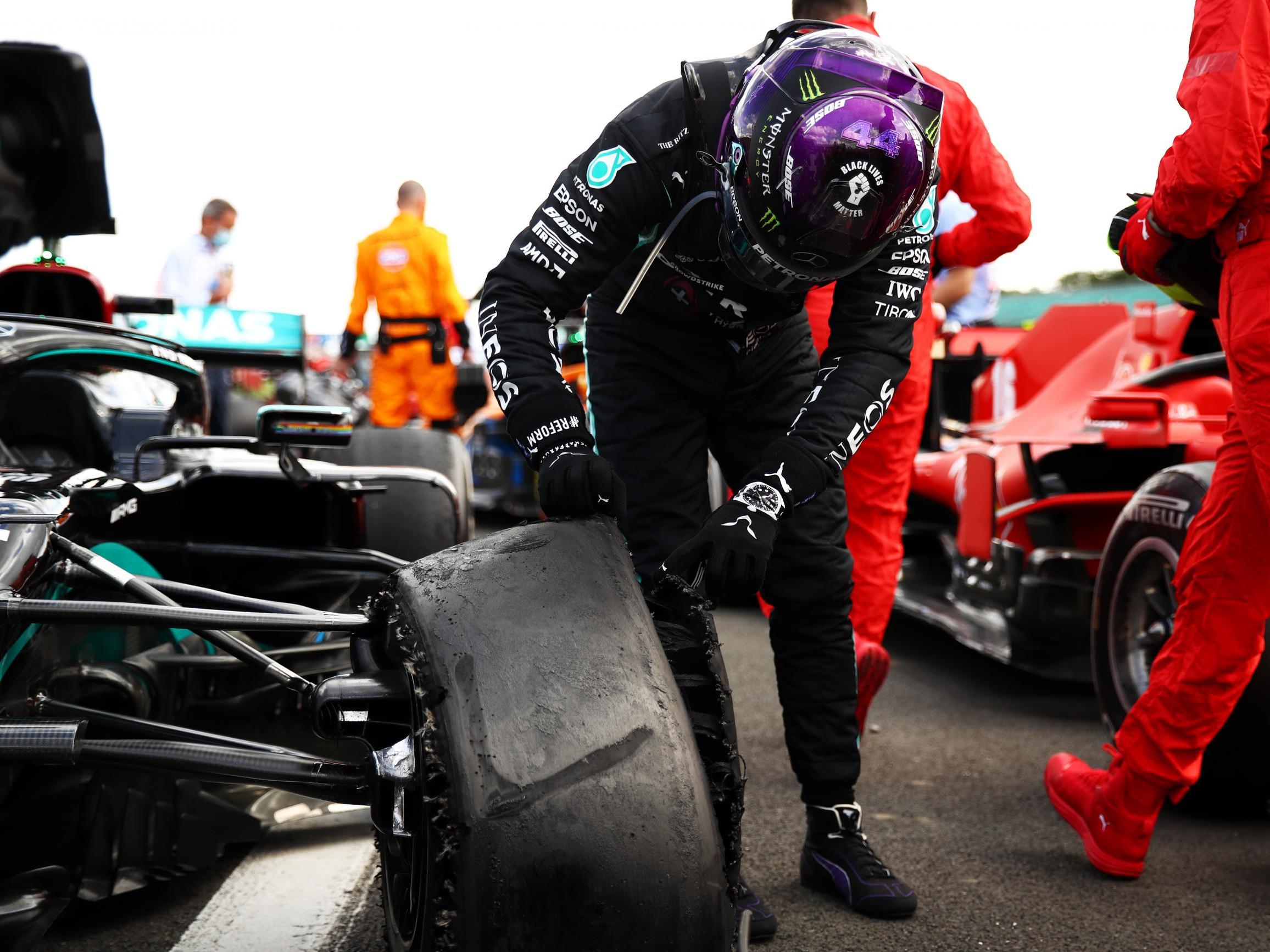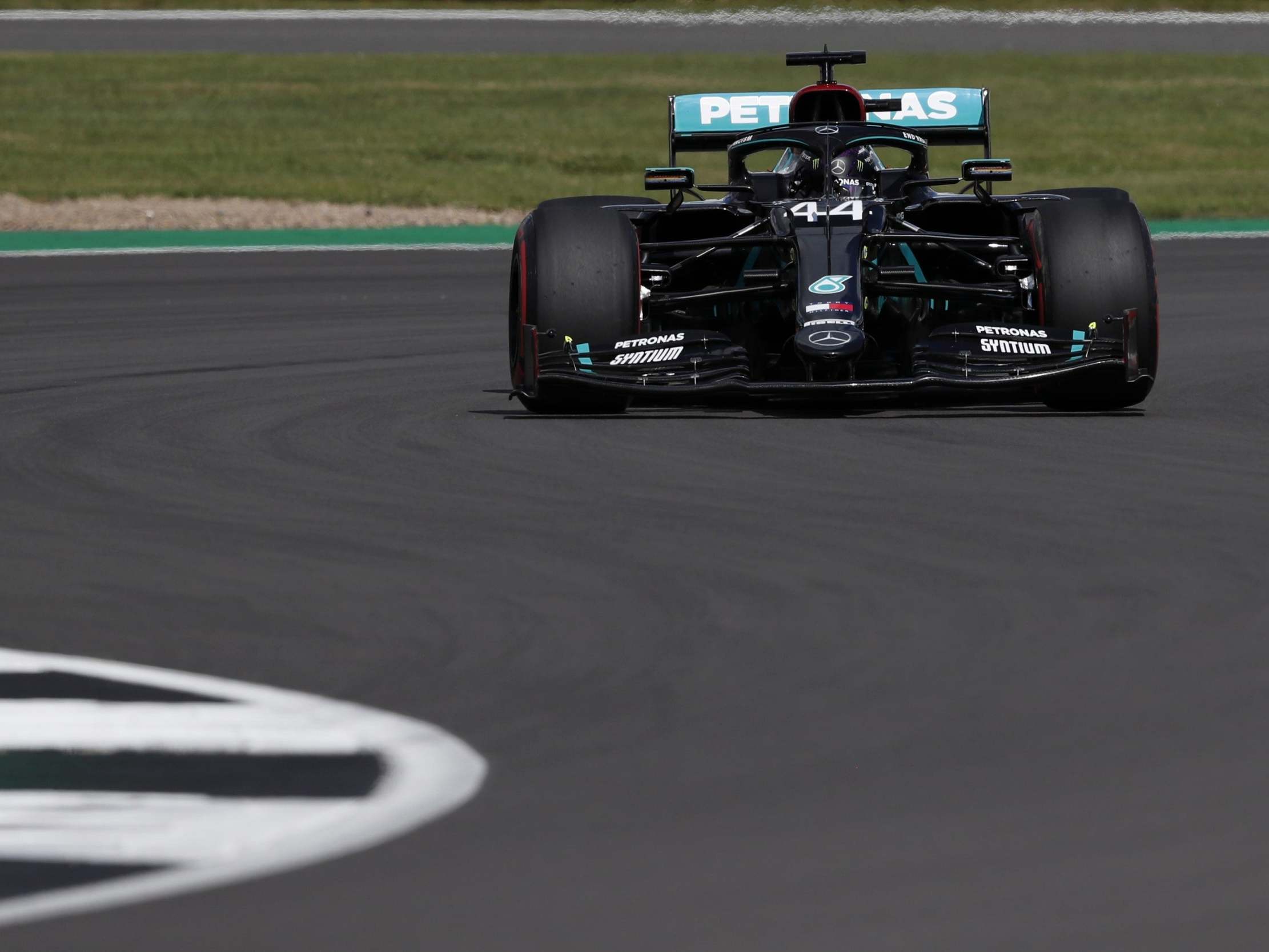F1’s plan to shake things up at Silverstone could come back to bite them after latest wave of punctures
Lewis Hamilton was one of three drivers to suffer a tyre failure late on in the British Grand Prix, sparking fears that something similar to the 2013 fiasco could return in the 7-th Anniversary Grand Prix this weekend
Your support helps us to tell the story
From reproductive rights to climate change to Big Tech, The Independent is on the ground when the story is developing. Whether it's investigating the financials of Elon Musk's pro-Trump PAC or producing our latest documentary, 'The A Word', which shines a light on the American women fighting for reproductive rights, we know how important it is to parse out the facts from the messaging.
At such a critical moment in US history, we need reporters on the ground. Your donation allows us to keep sending journalists to speak to both sides of the story.
The Independent is trusted by Americans across the entire political spectrum. And unlike many other quality news outlets, we choose not to lock Americans out of our reporting and analysis with paywalls. We believe quality journalism should be available to everyone, paid for by those who can afford it.
Your support makes all the difference.Formula One’s plan to mix up the two races at Silverstone in 2020 will be the major talking point this weekend after the final three laps of Sunday’s British Grand Prix.
A largely forgettable race exploded into life when Valtteri Bottas, Carlos Sainz and race leader Lewis Hamilton all suffered tyre delaminations in the closing stages at Silverstone, producing a nail-biting final lap as Max Verstappen attempted in vain to chase down eventual winner Hamilton.
Both Bottas and Sainz were left without any points whatsoever, while Hamilton was left to breathe a sigh of relief as he crossed the line just 5.8 seconds before Verstappen rounded the final turn, much to the Dutchman’s angst.
No sooner than being informed by his race engineer Pete ‘Bono’ Bonnington that he had done enough to win a seventh British Grand Prix of his career, the post-mortem of what went wrong immediately began.
“The tyre was feeling fine, I must have hit something on the track,” Hamilton told Bonnington, having also been informed of Bottas and Sainz having exactly the same issue.
Was there debris on the track? It did appear so, with Kimi Raikkonen suffering a front wing failure a few laps before Bottas’s puncture that saw carbon fibre splinter away from his Alfa Romeo.
But the sight of three major tyre blowouts in the space of two laps brought back memories of the 2013 Grand Prix when the Silverstone kerbs and Pirelli tyres combined to play havoc with the field, causing no fewer than six punctures that provided a few hair-raising moments for the likes of Sergio Perez, Felipe Massa and once again Hamilton.
This time around, Pirelli could not immediately put their finger on why so many front-left tyres failed, but with little time to fix it before this weekend’s F1 70th Anniversary Grand Prix at the same track, any investigation will need to be swift.
“We will obviously investigate what happened in the last few laps,” said Pirelli’s Formula One boss Mario Isola. “It's a bit early now to give you any conclusion. It could be high wear, because for sure tyres with 38 laps or more on this circuit are quite worn, but I'm not saying that the wear is the cause of the issue.

“It can be debris, because we had the pieces of the front wing of Kimi that were on track, but also some other debris. So that's why we want to investigate not only the tyres with a failure, but all the tyres used in the last few laps of the race, to understand if we find any other cut or any other possible indication on what happened.
“We don't want to exclude anything, we want to analyse everything 360 degrees and avoid excluding any possibility because it's a big mistake when you make these kinds of investigations. We have to consider all the possibilities.
“What we can do is to analyse the tyres from the race to understand if there is anything in the construction that was subject to excessive stress, or whatever, but this is one of the investigations.”
There are two major considerations to add to the equation though. The first is the timing of the second safety car period, following Daniil Kvyat’s high-speed off on lap 12. Most of the soft tyre runners were expected to pit from lap 20, meaning that the hard tyre needed for their second stint would have to last much longer than initially expected.

The second is that with tyres more worn than expected, they became vulnerable in ways not usually experienced. For instance, a chunk of debris that would normally be inconsequential to a normal Pirelli tyre could suddenly cut it to shreds because of the lack of rubber protecting the carcass, meaning that in those final laps, the tyres were at their most likely to puncture.
“The level of wear is quite high, this is a factor,” Isola added. “Looking at the tyre from (Romain) Grosjean’s first stint, it was completely worn, and I had a look at some tyres coming also from the second stint, and the level of wear is close to 100 per cent.
“Then we have to understand If this is the cause of the failures or not. What is clear is that when you have a tyre that is completely worn the protection of the tread on the construction is less. So if there is any debris, any small piece of carbon on track, it is easier to damage the tyre, because you don't have any rubber on the tyre that is protecting the cord, and some cords are visible on the tyres. So that's why I'm saying that the level of wear is close to 100 per cent.”
Intriguingly, Pirelli will stick with their change in tyre compound this weekend, meaning the three softer tyres will be on offer for the 10 teams this weekend in conditions that are expected to be even hotter than what they faced last week. In essence, it will mean more wear, more pit stops and undoubtedly more risk.
The answer is a simple one: stop for fresh tyres and remove the danger of suffering a tyre delamination at high speed. That’s an easy solution for the standard road-goer, but when the art of Formula One is stretching everything to its limit, that is not as simple as it sounds. Teams will not want to make three pit stops when they only need two, while drivers will shun hard tyres if they can make the softer ones work. With the task to juggle that balance between safety and speed, the 70th Anniversary Grand Prix could prove a nerve-wrangling event for all involved.

Join our commenting forum
Join thought-provoking conversations, follow other Independent readers and see their replies
Comments